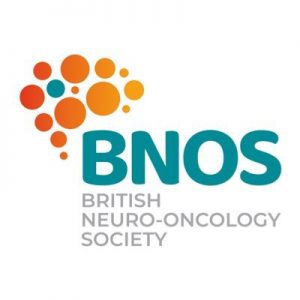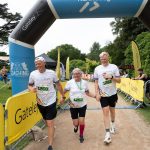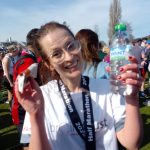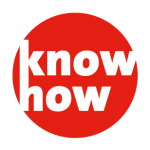British Neuro-Oncology Society (BNOS) annual meeting 2019

Helen, our Head of Services and Policy, attended the BNOS Annual Meeting along with Jane, our Support Specialist for London and the South East. They both had a busy few days, meeting clinicians from across the UK to spread the word about the support we offer to people affected by a brain tumour diagnosis.
Support
The BNOS annual meeting is always a great opportunity for us to connect with new clinicians and reconnect with some long-standing advocates of our work. Our resources were sought after: the Patient Guides were the most popular– these flew off the table, hotly followed by the fatigue resource and then our work on Proton Beam.
The support team is in high demand for running coaching workshops across the country – covering fatigue, the problem/outcome framework and our latest topic, managing behaviour and personality change.
The Golden Study
As ever, we were on the lookout for anything to do with improving the quality of life of people living with a brain tumour. It was good to see the results of the Golden Study shared, which was partly funded by brainstrust. This collaborative study (Brighton and Sussex hospitals, The Beatson (Glasgow), brainstrust and The Royal Marsden) explores whether it is possible to assess people aged 65 years or over who are newly diagnosed with a glioblastoma, with a geriatric screening. This comprehensive assessment predicts toxicity and survival. It can help people who are older decide whether it is better to have treatment and run the risk of a reduced quality of life, or not.
This study is more about the clinical teams and whether the geriatric screening could be fitted into an outpatient setting. It has been very successful, with 84% completing the assessment. Comments from nurses running the screening included:
‘I think an assessment is crucial . . . that 10 minutes doing the test; it tells you so much. We gain so much from that. ‘
‘It’s not too distressing for the patient, and is effective in highlighting their ability for treatment.’
Policy
Sadly there was nothing new, so no surprises here. We’re not learning from failure and current practice has stayed the same for years – patients present and they are referred to the local Multidisciplinary Team Meeting. If a biopsy is done then we have limited molecular markers to help decide what the treatment pathway should look like.
When a malignant brain tumour recurs, treatment is then best guessed depending on what worked first time around. We know from scientific work that the disease evolves and has the advantage; a glioblastoma at recurrence is not the same as the first time around.
BUT we know now what needs to happen to change the landscape and BNOS was a good opportunity to see the view from the bridge. These things need to happen is the landscape is to change:
- The patient needs to be seen as a model of their own disease, so that treatments are personalised
- Patient data needs to be capture and integrated
- Research should be embedded into the pathway of care – along the whole patient journey
- The current use of mouse and rat models isn’t translating into patient benefit. So we need more effective preclinical models
- The learning environment needs to be adaptive to engage all sectors
- Commercial investment needs see the necessary signals, enabling environments, and incentives to confidently invest in neuro-oncology.









